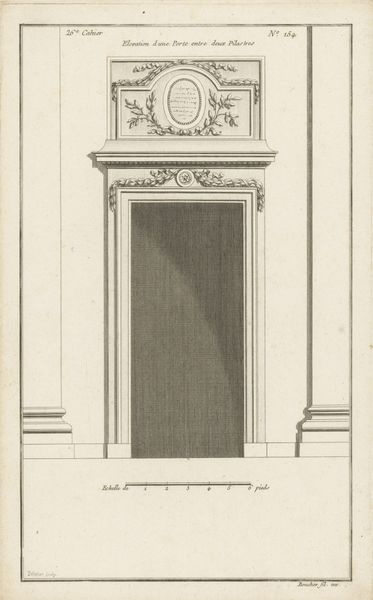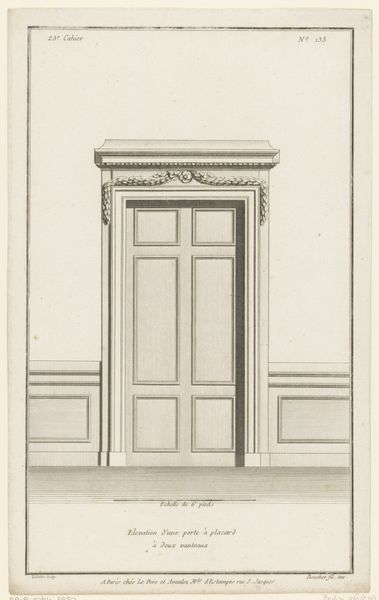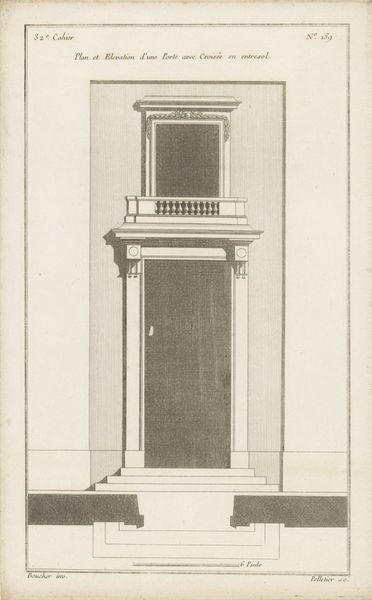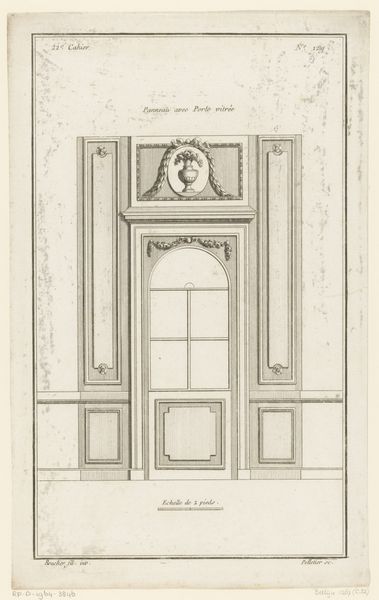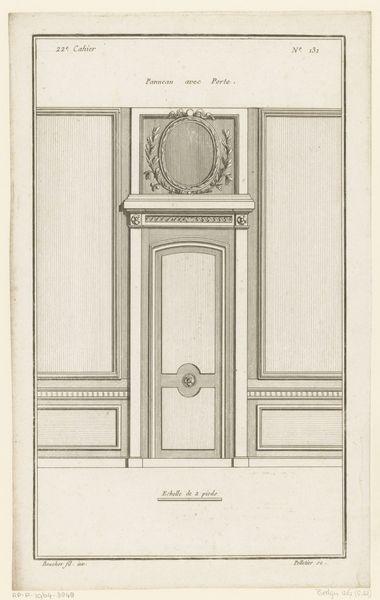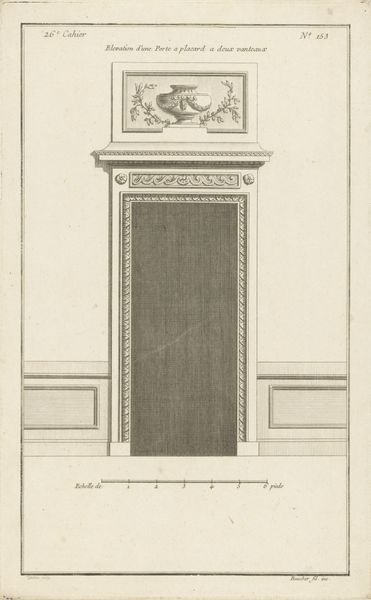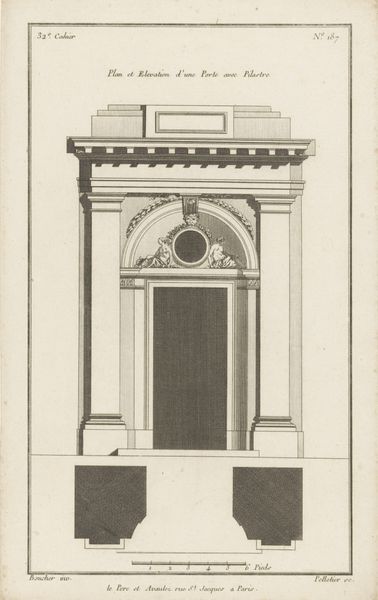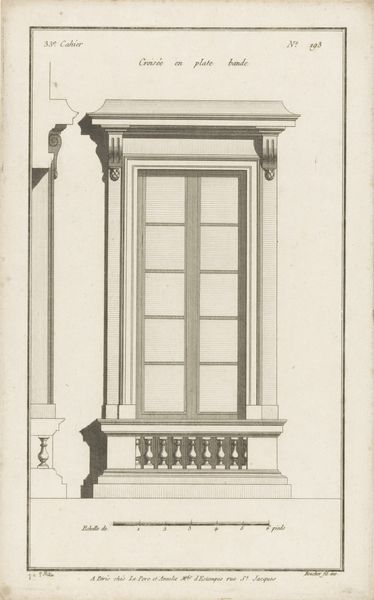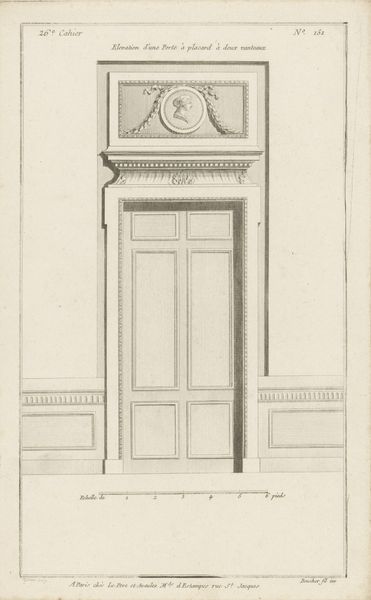
drawing, print, engraving, architecture
#
drawing
#
neoclacissism
# print
#
classical-realism
#
geometric
#
line
#
cityscape
#
engraving
#
architecture
Dimensions: height 330 mm, width 204 mm
Copyright: Rijks Museum: Open Domain
Editor: Here we have Jean Pelletier’s “Portaal met leeuwenkoppen tussen pilasters,” or "Portal with lion heads between pilasters" created between 1772 and 1779. It's an engraving, showcasing a neoclassical architectural design. I find the rigid symmetry quite striking, but also a little cold. What can you tell me about this piece? Curator: The chill you're sensing might stem from Neoclassicism's conscious rejection of the preceding Rococo style, which was considered overly ornamental and decadent. This print exemplifies the 18th-century obsession with classical antiquity. But what's being designed isn't an actual Roman ruin but something new. Editor: So it’s not necessarily meant to be a copy? More of an idealization? Curator: Precisely. Architects used these prints to promote and disseminate this new visual language, constructing buildings that were meant to symbolize reason, order, and civic virtue - projecting an image of authority for the state and those who had money to build things. Think about what that lion imagery signals – and where one might see it placed! Do you think ordinary people were likely to encounter something like this? Editor: I imagine seeing this on some grand civic building, a courthouse maybe, intended to make the public feel a certain way…safe, secure. This wasn’t really meant for private homes, was it? Curator: Indeed, you're seeing the interplay between architecture and power. Prints like these shaped the visual culture of the era. What do you take away from our discussion? Editor: I see it differently now, it's less about classical beauty and more about the function of that imagery in society! Thanks.
Comments
No comments
Be the first to comment and join the conversation on the ultimate creative platform.
